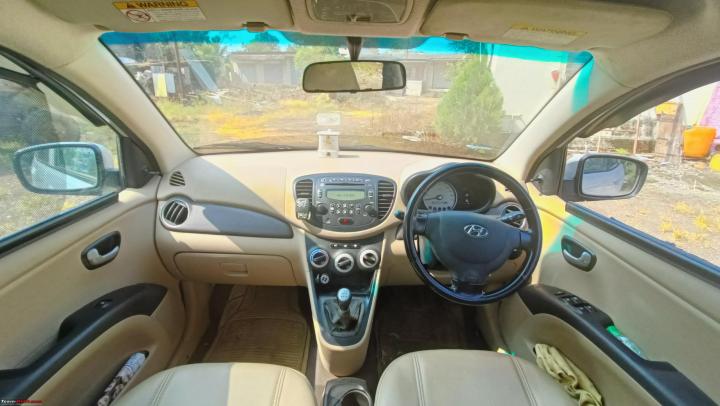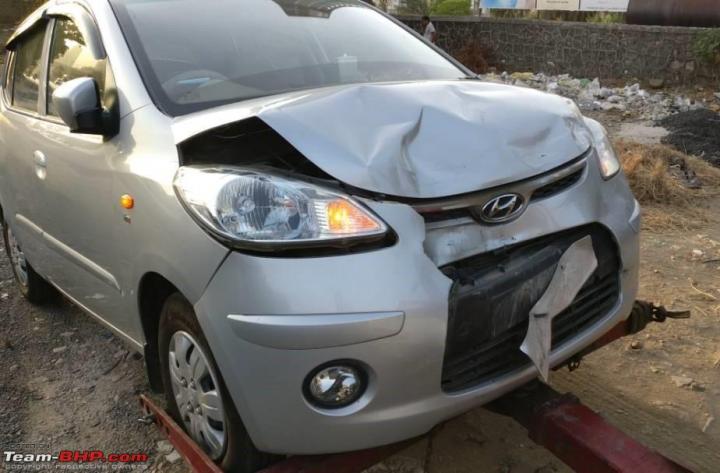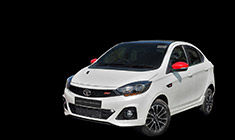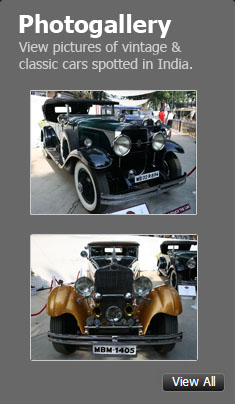News
Sold our Hyundai i10 for Tata Altroz after 14 years: Ownership review
Placing the gear shifter on the dashboard extension was a stroke of genius. A few more cars of yesteryear offered it as well (Honda CRV, Maruti Suzuki Ritz, Nissan Evalia, etc).
BHPian RoverX recently shared this with other enthusiasts.
"You have to reach for things beyond your grasp, or what is heaven for?" - Garth Stein
Now, this isn't a quote one would normally associate with material possessions, but one can agree that ownership of a vehicle is a very aspirational concept for most Indians. Realising that dream evokes the sentiment of having arrived in life, in a manner of speaking. With that, I would like to share a brief account of when this moment arrived in my life (my father's life, to be precise); an ownership report of Our Diminutive Darling! I've procrastinated on writing this for more than three years, but here it is!

P.S. All the opinions stated here are my own, and I mean no offence or disrespect to the proud owners of any of the cars mentioned below. Also, I've lost a good deal of the car's pictures due to the theft of one of my older phones, apologies in advance!
INTRODUCTION:
The year was 2007, and I had just completed my board exams. My dad, a civil engineer with the Govt. of Maharashtra, was transferred to a different department from Thane to Navi Mumbai. Since Navi Mumbai was much more accessible by road from our place than Thane, he was planning to finally let go off the local train commute after ~20 years and switch to a personal vehicle. Now make no mistake, a car purchase decision for a family man in his forties is way different from that for a corporate yuppie on the climb. It's always a head-over-heart affair, but truth be told, there weren't many cars back in the day this side of a million bucks on which one could 'set their hearts'. So the decision would be governed completely by practicality and budget, right? Heh, not so much when one has a budding BHPian as one's son!
I was the quintessential headache as well as the key influencer in making this decision. The constraints were pretty clear - it had to be a petrol hatch, reasonably spacious, and reasonably structurally sound (we were all grown-ups and NCAP ratings were an unknown quantity two decades ago). Budget was capped at INR 6 lakhs. As a typical Indian father who is a first-time car buyer, dad was veering towards the Maruti-Suzuki stable. Weird as it is, he had (and still has) a soft corner for the Omni! But I was looking for something for more than just 4 wheels and seats with a bodyshell; some amount of intangible connect.
The B1 segment hatchback market had just about started to heat up with the launch of the Maruti-Suzuki Swift (which was given a launch in a movie, no less). A hatchback buyer was being introduced to a variety of choices, from sporty and exciting Swift to mature and elegant Getz. The indecision was further compounded by several new launches that were happening.
BACKGROUND:
I'd like to sum up the hatchback scenario back in 2007-08, below:
- Maruti-Suzuki:
Apart from the Swift, Maruti had the usual Altos and Estilos of the world to offer. The pocket-rocket Alto VX 1.1 had been discontinued back in 2005; not that it would've made it to our list owing to its cramped interiors. I couldn’t digest the Estilo’s looks and the fact that Maruti tried to link it to the Zen, which had a completely different ethos! The Ritz and A-Star were still some time away and all of Maruti’s offerings in this segment screamed cheap.
- Hyundai:
The Santro was now the Xing, and neither design was palatable. This and the fact that the car felt 2 decades old made us decide against what was a fundamentally sound car. The Getz had a lovely, mature design, sorted dynamics, and the 1.5 CRDi mill made it a proper fun hatch. We would’ve considered the CRDi, but that was costing close to INR 7 lakhs on the road; not to mention the Getz was getting a bit too long in the tooth. There were scoops of the i10 flowing in left and right as a replacement to the Santro. Must say, it looked like a breath of fresh air! The i20 wouldn’t launch until later next year.
- Tata:
Oh, the less said about Tatas of yesteryear, the better! The Indicas of the day were either squeaking away to glory or stranded by the side of the road with their bonnets propped open. The “More Car Per Car” philosophy sadly didn’t extend beyond the space and comfort factor. The quality was abysmal, the drivetrains were horrendous, the driving position was really poor, service quality was (and still is) not up to the mark. The Vista would later fix a lot of these issues, but its launch was still a while away.
- General Motors India:
Opel had packed up from India by 2006. Chevrolet was badge-engineering other models back in the day, and the Spark (Daewoo Matiz), Aveo UV-A (Daewoo Kalos) and Optra SR-V (Daewoo Lancetti) were their hatchback offerings. The sexy-looking SR-V was priced stratospherically and hence automatically out of contention. The UV-A didn’t quite feel special enough, not to mention the Chevrolet brand was somewhat of a question mark in India. The Spark’s connection to the Matiz was actually quite endearing, since the latter was cute and cheerful car, and Chevrolet did a good job modernising it. But the car felt quite cramped, the one time we rode in it.
- Ford:
The Ford Fusion was in a no-man’s land in India, because neither the large hatch nor the compact crossover segment was particularly flourishing back then. It was in a similar boat as the Chevrolet Optra SR-V. Naturally, it was out of our contention. The Figo wouldn’t launch until much later, and we all know how great a product that was.
- Škoda India:
The Fabia was launched as Škoda’s fourth product in India after the D-segment sedans Octavia, Laura, and Superb. This car brought previously unheard levels of quality and sophistication to this segment, and was a very attractive offering. This was a wild card entry to my list, having launched pretty late in our purchase journey. - Maruti-Suzuki Swift:
+ Fresh, funky design in a sea of the proverbial dabbas.
+ Proven G13B engine was a great performer and reasonably efficient.
+ Nimble handling and compact dimensions were perfect for the city.
- Atrociously drab and claustrophobic interiors – the Gen 1 Swift felt terribly cheap inside.
- Limited rear seat room and tiny, oddly-shaped boot.
- Hard-edged ride which contributes to sprightly handling.
- Large blind spots due to thick A and C pillars – my dad who spent his motoring time around Ambassadors and MM540s found it difficult to navigate.
- Hyundai i10 iRDE:
+ Fresh design inside and outside that felt like a major upgrade over the Santro.
+ Ergonomically near-perfect, good visibility, and city-friendly dimensions.
+ High-quality interiors and smart packaging due to tallboy design.
+ Proven and refined drivetrain.
- Limited cabin width and small boot.
- Bumpy ride and spongy brakes.
- Škoda Fabia 1.2 MPi:
+ The most mature design among the three; made it feel half a size larger than the Swift. The wide haunches and rear three-quarters were actually similar to the Swift (which in turn was reminiscent of the Mini).
+ Build quality of the highest order; instilled confidence in the longevity of the product.
+ Spacious and practical interiors with many clever touches; largest boot among the three.
- Pricey – Variant for variant, the Fabia was INR 1 to 1.2 lakhs costlier than the competition.
- Škoda was a huge gamble in terms of ASS levels; appalled to see that the condition hasn’t quite changed.
- Wheezy 1.2 MPi engine was very leisurely in hauling the metal above it, resulting in poor fuel economy, too. The 1.4 TDi / 1.6 MPi variants were way out of reach.
OWNERSHIP EXPERIENCE:
The car served us admirably, ever since. It was a no-nonsense ownership experience, meaning there wasn’t much to rave about, yet very little to complain about. The i10 has been a perfect little city commuter while handling the occasional long-distance duties. We have taken several trips out of the state in our little darling, to Goa, Karnataka, Gujarat, Rajasthan, Telangana, and Andhra Pradesh. But these trips were too few and far in between, and the car was mostly relegated to the bumper-to-bumper ordeal of the ever-growing Mumbai traffic, which it took in its stride very well. Of the 14 years that we had the car, I was away from home for around 7 years for education or work, and the wretched COVID claimed around 2 years, which is part of the reason why the car had a limited running of ~65,000 km. I low-key regret not being associated with the ownership of our i10 as closely as I would've liked!
So Good:
- The i10’s narrow dimensions made it nimble enough to weave through the narrowest of gaps in urban traffic, and the light controls made easy work of tiresome drives. Tight turning radius, too!
- The placement of the gear shifter on the dashboard was PERFECT! The shifter was always a flick away from the steering wheel and freed up space on the centre console. Shifter action was one of the best in the business, too!
- Putting the front seat recline adjustment lever on the opposite side was a stroke of brilliance! Almost Škoda-esque clever thinking here - why fumble around the tight gap between the seat and the door to locate the lever, when there's a much easier and dignified way to adjust the recline!
- Interiors were tastefully appointed and of a higher quality than the segment standards. There wasn’t a soft-touch surface in sight, but the plastics used were not shiny or scratchy and their tactile feel was of the highest order. They held up very well throughout the 14 years of ownership.
- Generous glasshouse meant excellent visibility all-around. Placing this car on the road and in parking spots was never a problem despite the lack of any modern-day aids like parking sensors or reversing camera.
- The front seat design was pretty smart, and the lack of adjustable head restraints was not a bother.
- The 1.1 iRDE motor was extremely refined, rev-happy, and linear in nature. It did not have any top-end performance, but low-down torque was better than expected in a small naturally aspirated petrol engine. Gearing was spot-on, too, and the car cleared most speed breakers in the second gear (albeit when lightly loaded). I sorely miss this free-revving nature of my Tata Altroz i-Turbo.
- Switchgear operation was of terrific quality and felt well-damped – power window switches, AC controls, music system controls, steering column stalks, etc. Even the levers to release the bonnet and drop the rear seats worked smoothly. In comparison, the switchgear in most competitors worked with an irksome plasticky ‘click’.
- The AC recirculate function had a proper electronic switch, which was inexplicably replaced with an archaic slider in the facelift model.
No Good:
- The light steering was a boon within urban confines but gave zero feedback. It didn’t instill a lot of confidence at high speeds.
- The beige interiors were airy for sure, but the beige dashboard gave off a terrible reflection on the windshield and hampered visibility. This was probably one of the reasons why the dashboard colour scheme was changed to dark brown / slate in the facelift model.
- This was one of the few budget hatches back in the day to get a 4-speaker setup, but the audio quality was absolutely crap. As soon as the volume level crossed 7/8, there would be all sorts of undesirable pops and crackles.
- The instrument console was backlit in green, which looked very dated. This was replaced by a nice-looking blue-white backlight in the facelift model.
- The car was severely under-tyred, and kept chirping away to glory at every moderately tight turn.
- The A-B-C pedals were placed very closely, and used to foul with shoes above size UK-9. There was some space to the left of the clutch pedal to rest the left food, but no proper dead pedal.
- The clutch operation, although light, had a long travel and had a dead zone for the first couple of inches of travel.
- The headlamps had a weak throw and were quite useless in the rains. Similarly, the horn was meek-sounding.
Upgrades Done:
- The default 155/80R13 MRF ZEC tyres were upgraded to 175/70R13 Bridgestone B250s. This helped with the skittish feeling at high speeds and made the steering a tad bit heavier.
- The headlamps were upgraded with Osram Rallye 100/90W bulbs, which make driving at night that much safer. The high beam throw improved greatly.
- Leatherette seat covers were installed as the light, towel-like material on the seats would get soiled very easily. The front seat covers had a storage pocket at the back.
- Roll-up sunshades were installed on all four windows. The housing was screwed onto the doorpads and the shades themselves came with a clip to be latched on to the top edge of the window. The operation worked reasonably well, but the clips made some noise over bad roads.
- The factory horn was replaced by a Roots Wind Tone 90 horn, which gave out a very satisfying paarrrpp. This was necessary since absolutely nobody would give way to the tiny i10.
Things that did not age well:
- The AC performance had dipped a fair bit around the 10-year mark, despite cleaning the AC filter and getting the compressor / evaporator serviced regularly.
- The power window motors were beginning to pack up and had got noisy.
- Hyundai petrol engines are never known to be particularly fuel efficient, and this car was no different. The car returned around 11.5 kpl in the city and 17 kpl on the highway with a moderate load. On a full load, these numbers would dip a bit.
- Several electrical gremlins that cropped up after the accident (covered below).
PICTURES:
I’ll take a pause now and let some pictures do the talking, now. As mentioned before, I lost a good chunk of the car’s pictures to the theft of my phone, and they were some of the most picturesque shots of this car. Nevertheless, I think the ones that I have capture the essence of my narrative.

The i10 came wearing quite contemporary clothes for 2007-08, and had several interesting design elements. The chunky front bumper, slim front grille, subtle chrome garnish, etc. made for a fresh new look, which says a lot for a car that was a successor to ugly ducklings, Santro and Santro Xing. Eagle-eyed BHPians would have noticed that the rub strips on the doors and front and rear bumpers are black in some photos while silver in others. As part of the repainting done post my accident, I decided to get them painted in the body colour since it lends a cleaner look to the panels. Ground clearance of 165 mm and the soft suspension (especially at the rear) meant the car bottomed out on occasion when fully loaded. It also made the ride pretty bouncy over uneven roads, and bump recovery was poor. This necessitated one to drive the car extra sedately as the ride could induce motion sickness in passengers.

There is no pretense of being sporty in the design, yet it's been crafted quite smartly. Again, we have to compare the design against its contemporaries at the time. I read several reviews of the i10 and the number that stuck with me was the drag coefficient of 0.32. This was pretty impressive for a tall-boy hatchback and implied performance and efficiency gains for the small 1.1 litre engine. This view also shows how weedy the 155-section tyres are.


A very inoffensive side profile. The fact that these 13-inch wheels do not look out of place in this design is proof of how compact this car is. The i10 had good enough headroom, thanks to the tall cabin. One can see how much further the tailgate opens above the car's roof, when opened! Note that the rear door handle is placed slightly above the front door handle. There are subtle creases on the front fender and the rear door, and the latter subtly flows into the rear bumper. The door handles would have looked much more coherent if these creases were a single line, cutting through both the door handles. This little detail has bugged my OCD for 14 long years! This design detail was incorporated in a much more pronounced way on the last-gen Santro sold here, albeit overdone.


Another measure of how dinky the i10 was. The entry to my parking space requires me to circle the building, navigate a narrow driveway (which is half taken up by bikes on the right, we can spot a white Honda City in that space, above). With the i10, I never broke a sweat doing this exercise and backing up into my space. This, with two scooters already parked in the space. These compact dimensions were part of the reason why I wanted to relegate this car strictly to city duties and upgrade to a diesel SUV!


Quite smartly styled rear end; the rising window-line gave it a tipped-forward stance. Flat, slanting tailgate and shape of the tail lights seem reminiscent of the original Santro. The i10 had one of the best integrated rear spoiler with high-mounted stop light, in my opinion. The external boot release was cleverly integrated into the Hyundai logo. Rear defogger, washer, and wiper were provided on Magna and Magna (O) trim levels. Notice the broken wiper arm? That's the work of an enraged biker who thought I was in the wrong for honking at him when he cut me off at a traffic signal. The replacement wiper arm was ordered from Amazon. The exhaust canister was clearly visible from the rear, and as we found out later, was susceptible to kisses from the road very often. The large and obviously placed 'Baby Onboard' sticker was applied after the arrival of my niece.

I fondly remember the simplistic times when dashboards were not dominated by large screens; there's something so fundamentally pure about uncluttered car interiors. Hyundai nailed it on the head with this one, except for all that beige on the top dash. One can see the annoying reflections on the windshield that I mentioned earlier. Placing the gear shifter on the dashboard extension was a stroke of genius - not only was it ergonomically better, but also freed up more space between the front seats. A few more cars of yesteryear offered such shifter placement (Honda CRV, Maruti-Suzuki Ritz, Nissan Evalia, etc.). Note the car charger placed in the 12V power socket - the 2010 facelift had a USB Type-A outlet next to it, as well as the relocated AUX port. Tall central AC vents had limited adjustment range, and were primarily used to direct airflow to the rear passengers. One can see the retractable sunshades in this picture that I mentioned before.
The quality of materials was very good at this price point, and not a thing had come loose or fallen of throughout the entire duration of ownership. Subtle design touches like the crease on the doors that runs through the dashboard in a single uninterrupted manner looks very elegant. The elbow rest area on the doors was painted brown and did not sport any soft finish. Lower half of the doorpads were painted beige and used to get soiled very easily. Interestingly, even the top-end Magna (O) variant did not get electrically adjustable and foldable mirrors at the time. It was only when the Asta variant debuted with the 1.2 Kappa engine that we saw power ORVMs on the i10. The housing for the ORVM adjustment mechanism was pretty large, and together with the thick A-pillar, would sometimes create blind spots on tight right-hand curves.

Somewhere in misty Mahabaleshwar. The i10 had been a trustworthy companion on all our outstation journeys, and never once left us stranded anywhere. The 67 BHP engine progressively kept feeling inadequate as the family grew in size and count.



Back in March 2015, on one of our trips to Tal Konkan, my sister spotted this heavily camouflaged Chevy Trailblazer and snapped a few pictures of that gargantuan SUV. I shared them with Autocar India, and these were published in their scoop story for the Trailblazer. Apparently, this was the first sighting of this car in India. At the toll booth, the stark contrast in the sizes of the Trailblazer and i10 was very evident!

Happy faces with an equally cheerful car!
Continue reading RoverX's ownership review for BHPian comments, insights and more information.














_4.jpg)
.jpg)









